No words could more clearly describe the grandeur of the scene laid before the eye when standing at one of this park’s numerous vistas… Grand Canyon National Park
Guide to Grand Canyon
Grand Canyon National Park
The Grand Canyon National Park is a fabled land of lore. It is a classic among the national park collection and our second most-visited park. For good reason. Nothing else on Earth is quite like it. It holds a hallowed place in the mind of many Americans as a national shrine. As former conservationist President Theodore Roosevelt stated, The Grand Canyon is “one of the great sights which every American should see”.
This ridge-riddled land is home to over 277 miles of the Colorado River, making it the longest canyon in North America. The chasm it forms in the Earth’s surface is up to 18 miles wide, and more than a mile deep. Innumerable side-canyons descend into its depths, where the river’s relentless flow has exposed rocks that are nearly 2 billion years old, or one-third of the Earth’s age.
Two Rims – Two Worlds
The park is effectively divided into two distinct regions by the extreme topography of the land itself. The South Rim and the North Rim lie a mere 10 miles apart for our feathered raven friends, however this minimal distance translates to a 24-mile hike or a 225 mile drive for human visitors.
The canyon’s South Rim is the destination for the majority of the park’s 6 million annual visitors, and this becomes obnoxiously obvious upon arrival. Hundreds of buses per day pass through the southern gates and thousands descend upon the gift shops and restaurants that line the walkways of Grand Canyon Village.
By contrast the North Rim sees a mere 10% of park visitors. This forested location enjoys a more laid back atmosphere with fewer visitor services and limited amenities available. The North Rim is closed during the winter season.
Grand Canyon South Rim
The South Rim is home to most of the park’s more popular sights. Access to the inner canyon, as well as classic viewpoints, is quite a bit easier from this region. This location is open year-round. Services here are wide ranging for a national park, and include a market, post office and even a bank.
There are a multitude of lodging possibilities near the South Rim, more tour opportunities, and activities such as helicopter and mule rides. This side of the canyon is also more easily accessed from a number of large cities than its counterpart. Quite simply, it is the most developed area of the park, by far. The downside is, that everyone’s here…

Driving in Grand Canyon
The southern side of the canyon is accessed by Desert View Drive, which is Arizona Hwy 64. This scenic drive provides pullouts at many of the South Rim’s more famous viewpoints. The drive begins at the Desert View Visitor Center, just inside the park’s East Entrance. From here it runs along the South Rim for 25 miles before reaching Grand Canyon Village. At the village junction, Hwy 64 turns to the south. It soon leaves the park and leads to the town of Tusayan and further to Williams, Arizona on I40.
Grand Canyon Shuttles
This area of the park is serviced by free shuttle buses that operate in an attempt to lessen congestion and provide a more pleasant visitor experience. Some areas of the South Rim are restricted to shuttle buses only during the park’s busier spring, summer and fall seasons. Bringing a bicycle to ride from place to place here is a wise idea.
Trails
Many feel content to view the Grand Canyon from the park’s upper regions, but the human spirit of exploration often requires a bit more. Great numbers of visitors simply must journey into the depths below. The South Rim offers a great number of hiking trails that make this possible than does the North Rim and a much shorter distance to the river itself. Trails such as the Bright Angel, South Kaibab and the Grandview Point Trail offer easy access to a world below the rim.
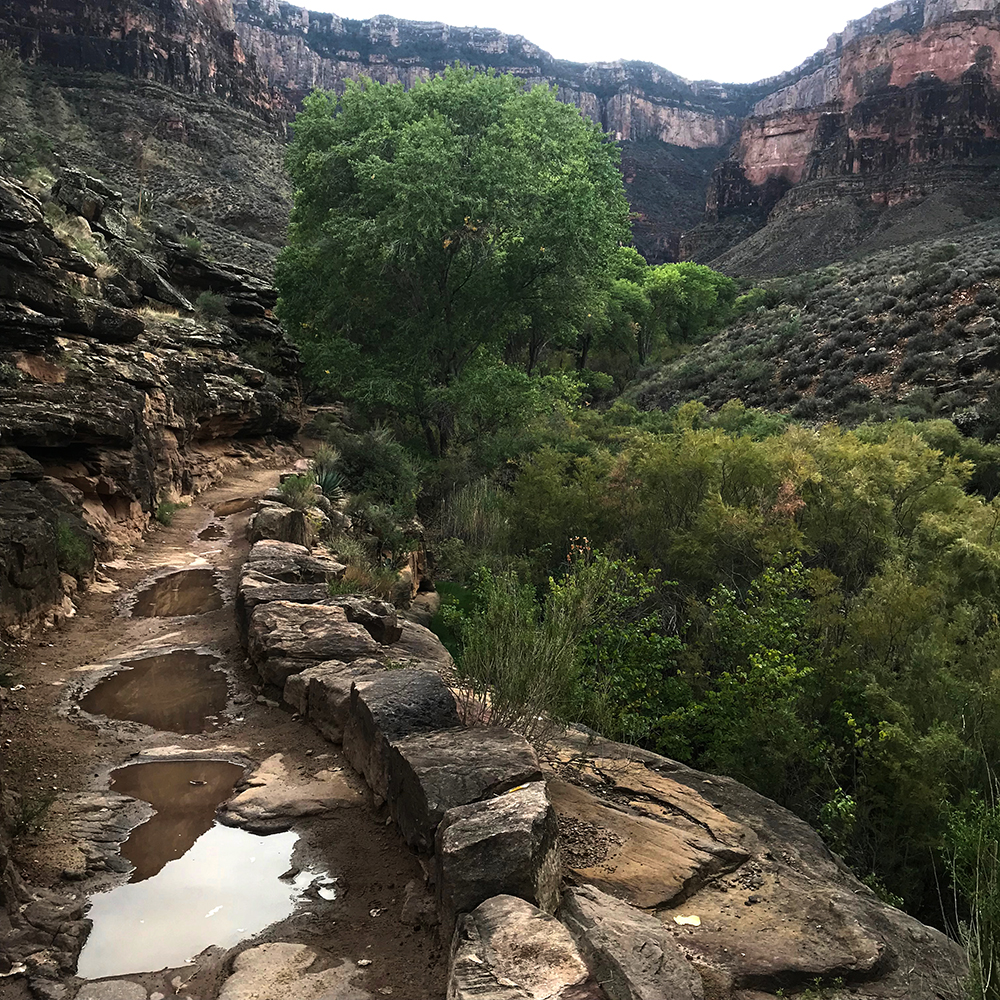
Be aware however, these trails are deceiving. Easy trips down do not equate to easy trips up. More than 250 rescue missions are preformed each year by park rangers in the Grand Canyon and some of these are to recover dead bodies. Do not become a statistic here. Be prepared, take more water than you’ll need, do your research and know your body’s limits. Turn around before you should. Live to tell of your awesome adventure.
South Rim Weather
Thanks in part to an elevation that is about 1,000 feet lower, the South Rim enjoys a climate that is slightly warmer and drier than that of the North Rim. This results in temperatures that are often drastic during the summer months, when the North Rim offers shaded relief that is often at least ten degrees cooler. There are less trees on the South Rim. It exists a a more desert-like environment, while the North Rim may be described as a more woodland landscape.
Views
The elevation difference also provides views that differ substantially from one rim to the other. From the South Rim, the viewer looks out on a canyon that may appear even more massive due to the fact that the opposing cliffs rise about 1,000 feet above the viewer. From the North Rim, the viewer is peering down into a large chasm whose southern walls offer little contrast from the land above. This can make the landscape more difficult to comprehend, but it remains grand nevertheless.

Gazing outward from viewpoints along the South Rim’s Desert View Drive, would-be sight-seers may find it difficult to make out the major body of water flowing westwardly some 6,000 feet below. Nevertheless, the scenery is stunning, especially during the golden hours of sunrise and sunset. Low angle rays of soft light during these hours present an endless continuation of brilliant sun-bathed ridges. These stand complimented by deep shadowy valleys that highlight the true vastness of this stark desert landscape.
Grand Canyon North Rim
Welcome to the Grand Canyon’s quiet side. This is the place to take relaxing walks through surrounding forests that offer occasional views of the famous canyon that drops off just to the south. If you’re lucky, you’ll find yourself camped in the tall trees of this sub-alpine forest, seeking the warm glow of your campfire as the sunset brings another chilly evening.

Services
The North Rim is more remote and offers fewer services, but there are less people. Parking is limited and the small “village” here seems non-existent compared to the one across the canyon. Lodging options are extremely limited and you’ll want to bring everything you’ll need, as the nearest grocery store is found in Kanab, Utah, about 75 miles away.
Seasons
The area is about a thousand feet higher than the South Rim and the location is only open mid-May through mid-October, due to the heavy amount of snowfall received here. Some years if snowfall is light, the road to the rim may be open later and earlier, but will be open during daylight hours only. No services are available during these times.
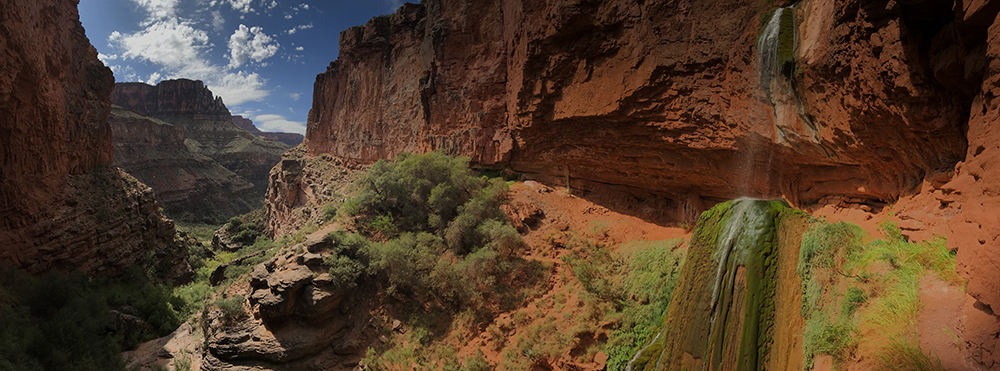
The higher-altitude forests here consist of plant species not commonly associated with the Grand Canyon. Forests of ponderosa and piñon pines are found here, just as they are on the South Rim. However, at this elevation a number of other trees begin to find homes. Douglas fir, Engelmann spruce, blue sprue white fir and aspen are found here, along with a number of lupines and asters. Chilly fall evenings on the North Rim quickly relay the message that you’re not exactly in the lowlands anymore.
Driving & Viewpoints
Easily accessible viewpoints are far fewer here than on the South Rim. The Cape Royal Road provides most of the overlooks on this side of the park, passing by numerous gorgeous vistas on its winding course to Cape Royal.
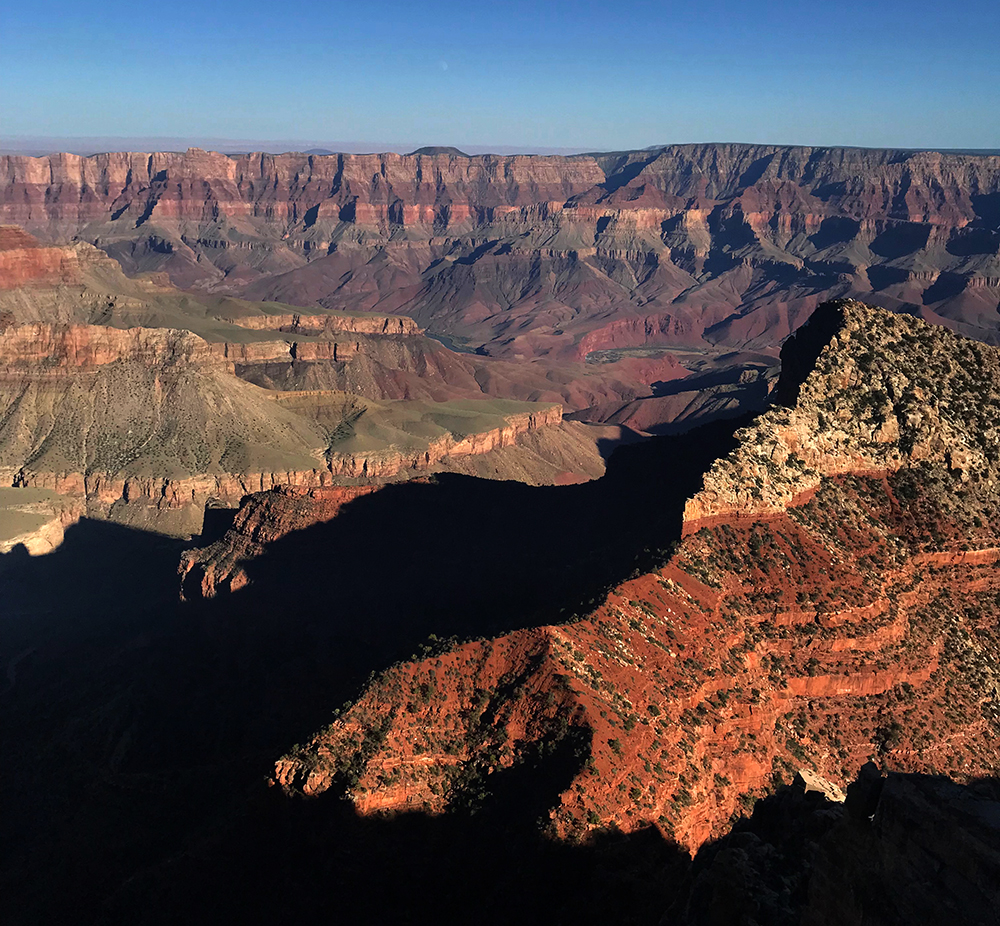
This scenic road was built in the 1920s and was the first major improvement to the North Rim by the newly created National Park Service. After snaking across the Walhalla Plateau for 20 miles, the road ends at the North Rim’s southernmost overlook. Cape Royal offers a couple of short trails that lead a to brilliant views of Angels Window, Vishnu Temple and Wotans Throne.
Trails
Trails on the North Rim lead through wooded forests and across vast meadows to viewpoints that look down upon the entirety of the park. Numerous options exist here, but hiking such trails often requires a ten-mile round-trip stroll in exchange for the stellar solitude of these remote viewpoints. This is the departure point for most Rim-to-Rim hikes. The higher elevation here means that through hikes from here will have about 1,000 feet less elevation to gain on their exit.
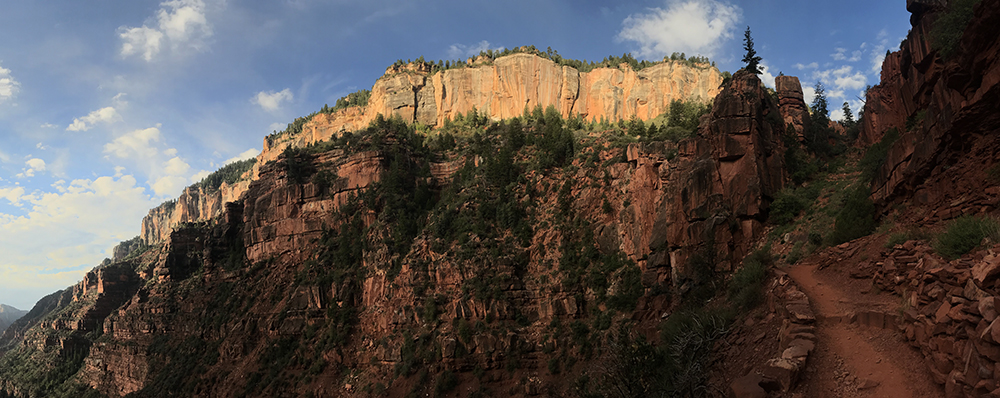
As stated earlier, the North Rim offers fewer easily accessible viewpoints than its southern counterpart. Many options here require some effort, but nature often gives you exactly what you pay for…
Playtime in Grand Canyon
Hiking is a popular way to enjoy the canyon. Numerous moderately difficult trails skirt the edge of the canyon and a number descend into its depths. Such inner canyon trails require good physical stamina.
Take plenty of water, at least a gallon per person daily, and allow adequate time. Down is easy. Up, not so much. The classic 24-mile Rim-to-Rim is a favorite for many. Park officials warn against attempting this hike in a single day, yet many do, and succeed. Know your limits.
Rafting the Colorado
Perhaps the most complete introduction to the Grand Canyon can only be made by a trip down the river by boat. Individual trips are popular and are thus, were once booked from now till eternity. A revamped lottery system was implemented in 2006 and has provided what appears to be a sustainable method for providing fair access to this widely desired journey.

A faster, less-involved, yet more expensive method for obtaining access to a river trip is through one of the numerous commercial rafting companies. These guys offer trips of just a few days or longer journeys that can take a couple of weeks. Those who run the river explore parts of the park that most visitors will never see, and have time to check out side canyons and historical sites that can only be accessed by boat. Most who take such a voyage will never forget their time in this geologic wonderland.
Some may just as soon have someone, or something, else do the work. These folks may be interested in a horse or mule ride into the canyon. Mankind has depended upon a fine steed to provide reliable transportation in this canyon for more than a century. Today, visitors can journey into the canyon with a guided horseback tour that often becomes one of the more memorable days of their lives.
Plenty to Do
This place is simply massive and you’ll find plenty of ways to spend your time and energy. Be sure to check out the visiting and activities pages here at park junkie. With more than 1.2 million acres, there is no end to the opportunity for adventure in Grand Canyon National Park.
The canyon’s original explorer, geologist John Wesley Powell, who first descended the canyon in 1869, called it “the most sublime spectacle on the Earth”.
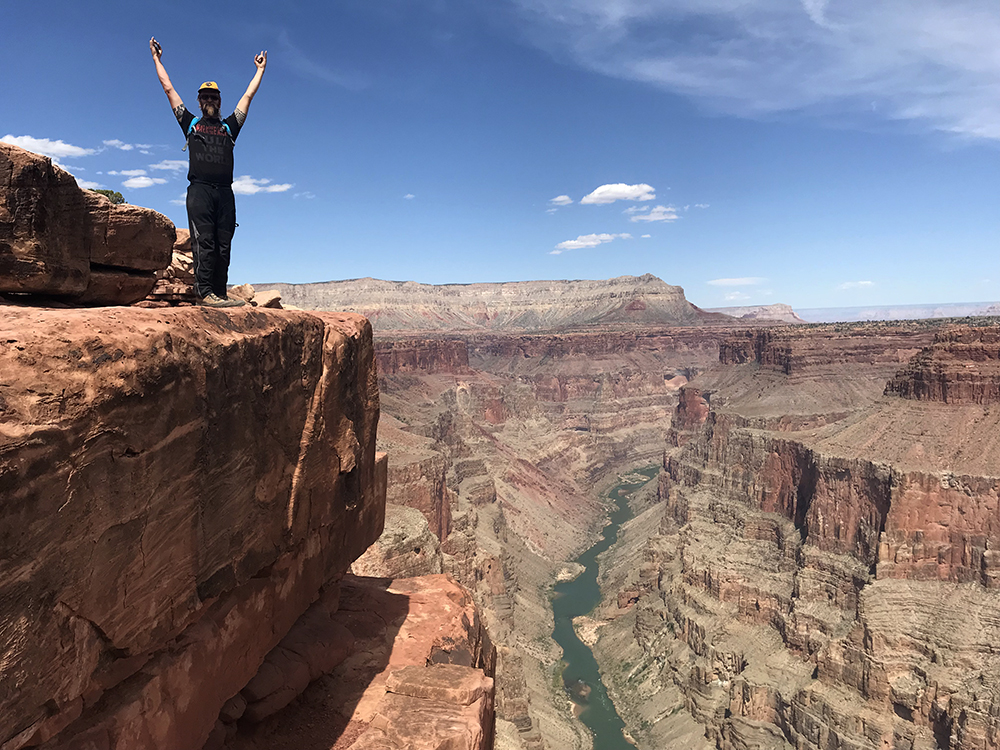
Park Junkie Verdict
With 1.2 million acres to explore, visitors will not suffer for a lack of activities in Grand Canyon National Park. Many endeavors in this massive desert land require advance preparation and logistical planning in order to succeed. This place is big, unforgiving and without a doubt, grand…
Check out the activities and visiting links here to find your next adventure in the Grand Canyon.
See ya there…
Guide to Grand Canyon
Relevant Links
NPS – Grand Canyon National Park
National Park Guides

All content found on Park Junkie is meant solely for entertainment purposes and is the copyrighted property of Park Junkie Productions. Unauthorized reproduction is prohibited without the express written consent of Park Junkie Productions.
YOU CAN DIE. Activities pursued within National Park boundaries hold inherent dangers. You are solely responsible for your safety in the outdoors. Park Junkie accepts no responsibility for actions that result in inconveniences, injury or death.
This site is not affiliated with the National Park Service, or any particular park.
